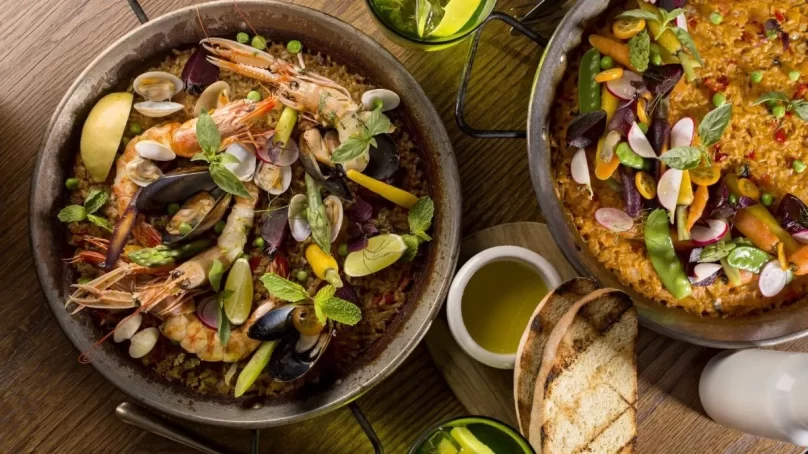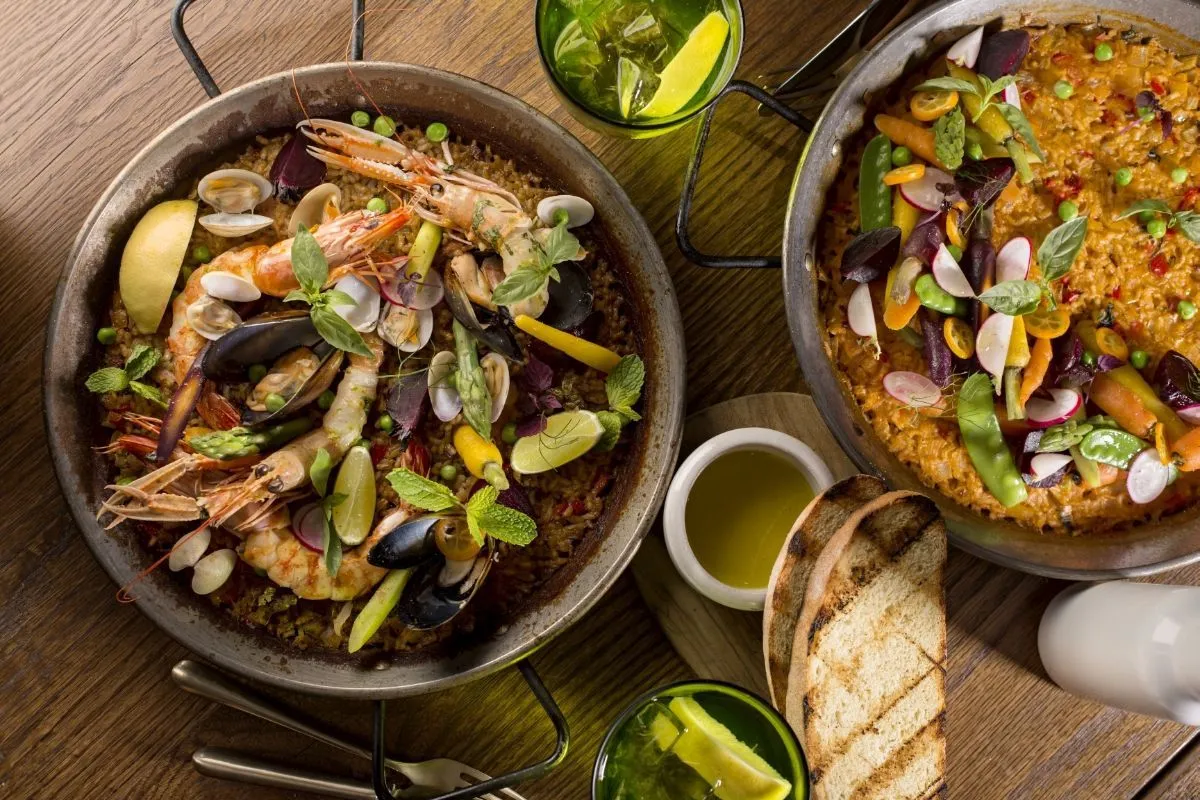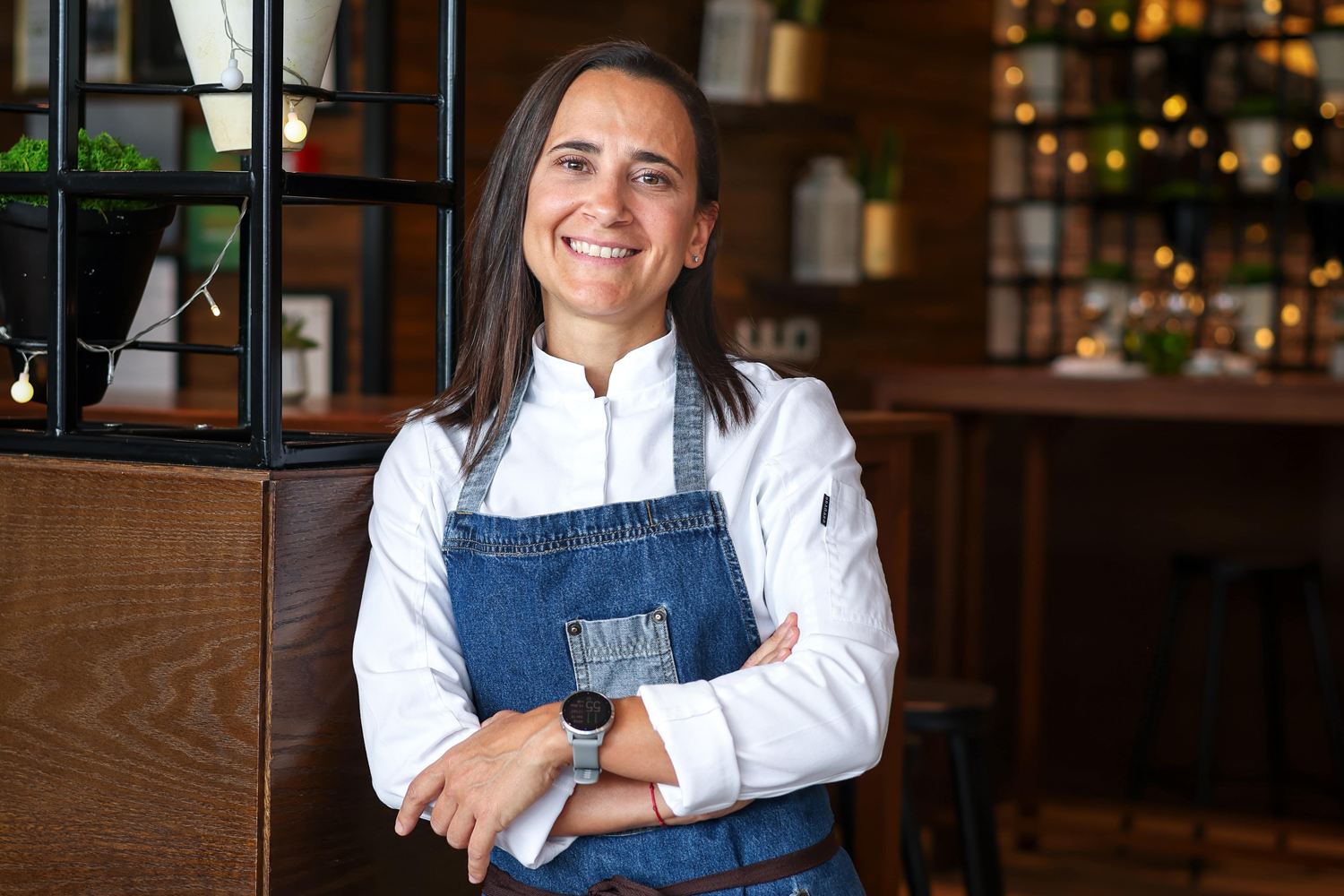

Spain has always relied on a Mediterranean diet as the cornerstone of its gastronomy. While this results in many similarities with neighboring countries, the presence of the Atlantic Ocean and Cantabric Sea also provides an array of ingredients with distinct organoleptic qualities. These variations in ingredients open the door for the exploration of the differences between the same species from different origins. This distinction is particularly noticeable in the north and west of the country, while keeping in mind that that the main cuisine will always be Mediterranean.
Spanish cuisine is recognized for its cold soups, pickles and “aliños,” which are salads made with vegetables and seafood that can be found at every bar counter. While Spanish food is well seasoned and sometimes sharp in taste, we are not experts in spices like other countries. Furthermore, while we grow high-quality rice, bread is considered more important to most locals.
The main thing that differentiates Spanish cuisine is the locals’ love of informal dining. Spanish people love to eat tapas and enjoy eating out. It is common to have an entire lunch based on small bites, standing at a bar, and this can be extended until dinner. Spaniards enjoy a variety of dining options, but it is rare to see us seated for a formal family meal every day.
Regional differences
Being surrounded by water and having mountains and valleys give rise to both similarities and specific characteristics. If we divide the country into three regions, starting from the south, Andalusia is heavily influenced by the sea, resulting in seafood stews and shellfish. Iberian pork is also bred there, which we cook in many ways and from which we get the famous ham and other dry-cured charcuterie. We also cannot forget the influence of the Islamic period and the “Al Andalus” state, which resulted in a certain influence of Moorish cuisine.
In the heart of the peninsula, the food is heavier due to the cold weather. This results in stews and a greater use of meat. They also grow different vegetables, such as chard and cabbage, which thrive in harsher conditions, while in the south, there is a focus on crops that grow in warmer climates. Originally, cod was quite common in these regions, as it used to be salted to ensure it would arrive fresh to the interior of the peninsula. It is still extremely popular in this area, although it must be said that Madrid is the second-largest fish market in the world after Tokyo. Moving to the north, we find a mix of foods, with great shellfish and molluscs in the Cantabrian area, as well as nourishing and rich dishes. Charcuterie is treated differently here than in the south due to the humidity, resulting in fresh sausages and chorizos that are usually cooked or used as ingredients in various stews. If we go to the northeast, we can also see the French influence in the use of creams and butter for cooking, while in the south, olive oil is king and used for both cooking and dressing.
Trends
In recent years, the trend in many countries has been to focus on local ingredients and highlight their natural flavors by using cooking techniques that enhance the product rather than mask it. Additionally, there is a growing interest in natural techniques such as fermentation, which not only present food in a unique way but also provide health benefits. Ingredients like koji made from rice or soy, inoculated with a fermentation culture like Aspergillus Oryzae, have been used in Asia for centuries to produce mirin, sake or miso but are now being used to soften meat and provide intense umami flavors to dishes. The concepts of sustainability and zero waste are also becoming more important in the restaurant industry, and it is great to see more businesses practicing and promoting these values while guests can support them. Future food trends will continue to prioritize sustainability and conservation as key goals for the industry. Customers are seeking out restaurants that have a positive impact on the environment, particularly in the meat industry where there is a high demand for environmental responsibility. As a result, we are seeing the emergence of farms focused on reducing CO2 emissions. Another way to achieve this sustainability commitment is through aquaculture, which Spain leads in fish and seafood production in Europe. Thanks to organizations like the Spanish Institute of Oceanography and others, there have been great advances in sustainable fishing practices, resulting in high-quality species like lemon fish, red mullet, octopus, and bluefin tuna. Fine dining restaurants are promoting the use of these sustainable products and even highlighting their origin on menus. Another upcoming change is the rise of flexitarian offerings in restaurants, which will be primarily based on vegetables and plants with minimal use of animal products. This shift is driven by several reasons but mainly stems from the need to conserve and protect resources.

Patricia Roig,
Executive chef of BOCA, UAE














